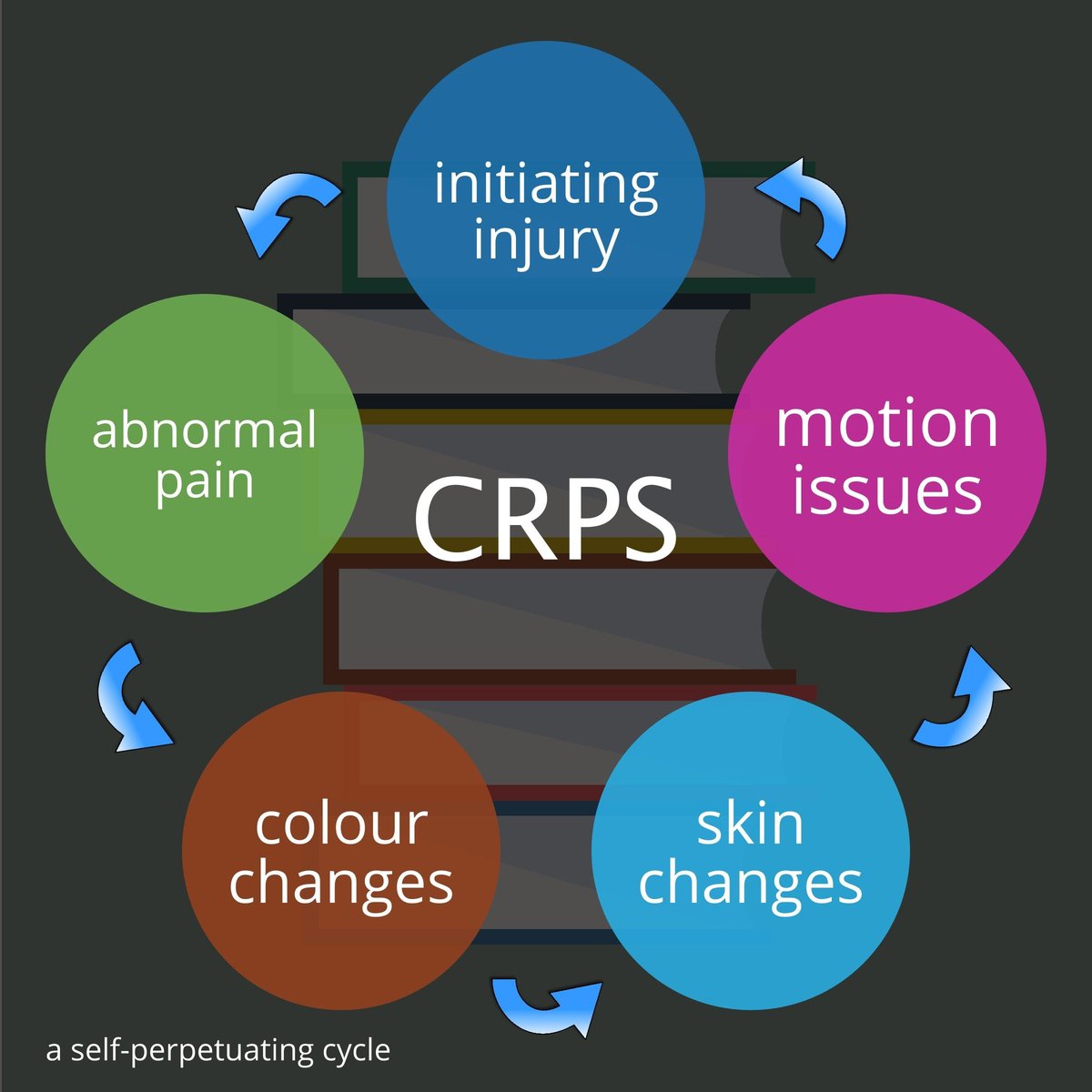Complex Regional Pain Syndrome (CRPS) is a type of Chronic Pain. The pain experienced after a trauma, injury or surgery is disproportionate to the injury that has occurred. Pain experienced may not correspond with the severity of the injury and there is an absence of an alternative diagnosis which may explain your pain levels. CRPS usually does not respond to conventional pain medication. Despite CRPS being a very complex disorder, there are many multi-disciplinary treatment options that can help in conjunction with your physiotherapist, general practitioner and any other health professionals involved.
Do you have to have nerve damage to have CRPS?
CRPS can occur whether there is nerve damage as a result from your original injury or not. If you did not experience any nerve damage from your original injury then you will be classified as type 1 CRPS. If you have experienced nerve damage then that is called type 2 CRPS.
How common is CRPS and what kind of the population can it happen to?
- Can occur in adults & children
- Females are affected 3 times greater than males
- Most common age 61-70 years of age
A study completed in the Netherlands in 2007 found:
- Post-menopausal women have a higher risk of CRPS
- It is more likely to occur with upper limb injuries compared to lower limb injuries
- The most common initial injury that CRPS sufferers had prior to suffering from CRPS was a broken bone
What are the symptoms?
Let’s say you have injured yourself and you continue to experience pain beyond the expected time-frame, then you may experience some of the below symptoms;
- Spontaneous pain described as either burning, hot, stabbing, shooting, aching, constant, tightness
- An elevated response to a painful stimulus
- Experiencing pain from a stimulus that should not normally cause pain e.g. someone lightly touching your skin, or feeling pain when water touches your skin in the shower.
- Involuntary muscle contractions
- Tremors
- You may not feel like that body part belongs to your body anymore
- Decreased range of motion and tight muscles around the injured body part
- Altered movement patterns
The injured body part may experience:
- Skin colour and/or temperature changes
- Increased sweating
- Swelling
- Increased nail and hair growth
What can my physiotherapist do to help?
The aim of physiotherapy treatment for chronic pain and CRPS is to help the client manage their pain levels better, improve function of the injured body part, and assist with range of motion, strength and flexibility. Treatments may include:
- Graded motor imagery including limb laterality recognition, imagery, mirror therapy
- Manual therapy – muscular trigger point therapy, dry needling, soft tissue massage
- Exercises to improve range of motion, strength and flexibility
What next?
If you are reading this blog and you are experiencing some of these symptoms please do not hesitate to book in an assessment with your physiotherapist to discuss how we can work together within a multidisciplinary team to achieve your goals.
References:
- Butler and Moseley (2010). Explain Pain. Noigroup Publications, Adelaide Australia.
- Coderre and Bennett (2010). A Hypothesis for the cause of complex regional pain syndrome – type 1 (reflex sympathetic dystrophy): Pain due to deep-tissue microvascular pathology. Pain medicine (11) 1224-1238.
- Mos, Bruijn, Huygen, Dieleman, Stricker and Sturkenboom (2007). The incidence of complex regional pain syndrome: A population-based study. Pain (129) Issue 1 p.12-20
- Moseley (2004). Graded motor imagery is effective for long-standing complex regional pain syndrome: a randomised controlled trial. Pain 108 p192-198
- State Government of Victoria (2012). Better Health Channel. Retrieved 21/05/12 from http://www.betterhealth.vic.gov.au/bhcv2/bhcarticles.nsf/pages/complex_regional_pain_syndrome?open
– Julia Esposito

